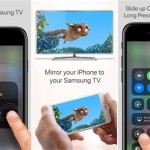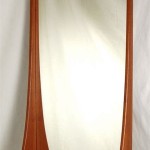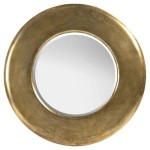How Do I Mirror My Android Phone To TV?
Mirroring an Android phone's screen to a TV offers a larger viewing experience for various content, including photos, videos, games, and presentations. Several methods enable this functionality, each with its own advantages and limitations.
Using Chromecast
Chromecast, a small streaming device that plugs into a TV's HDMI port, provides a seamless wireless mirroring experience for many Android devices. Ensure both the Chromecast and Android phone are connected to the same Wi-Fi network. Open the Google Home app on the phone, select the desired Chromecast device, and tap the "Cast my screen" option. This initiates screen mirroring, displaying the phone's content on the television.
Chromecast's ease of use and wide compatibility make it a popular choice. However, performance can be affected by network congestion or distance from the Wi-Fi router. Older devices may experience lag, especially during high-bandwidth activities like gaming or streaming high-resolution video.
Utilizing Smart TV Features
Many modern smart TVs offer built-in screen mirroring capabilities, often termed "screen sharing" or "Miracast." Consult the TV's user manual to confirm compatibility and specific instructions. Generally, the process involves enabling screen mirroring on both the TV and the Android phone. The phone will then search for available devices and connect to the TV. This method eliminates the need for external devices like Chromecast.
Direct connection to the TV can offer a more stable connection than Chromecast, particularly in environments with limited Wi-Fi bandwidth. However, the setup process and available features can vary significantly depending on the TV manufacturer and model.
Connecting with an HDMI Cable
A wired connection using an HDMI cable provides the most reliable and stable mirroring experience. This method requires a USB-C to HDMI adapter compatible with the Android phone and a standard HDMI cable. Connect the adapter to the phone's USB-C port and the HDMI cable to the adapter and the TV's HDMI port. The TV input should then be switched to the corresponding HDMI port.
Wired connections eliminate potential Wi-Fi interference and offer minimal latency. However, this method sacrifices portability and requires specific hardware, potentially adding cost and complexity.
Exploring Third-Party Apps
Various third-party apps facilitate screen mirroring from Android devices to TVs. Some of these apps specialize in mirroring to specific TV brands, while others offer broader compatibility. Researching app reviews and functionalities is crucial before installation. Some apps may require in-app purchases or display advertisements.
Third-party apps can provide additional features, such as customized streaming settings or enhanced audio support. However, compatibility and performance can be unpredictable, and users should exercise caution when granting access permissions to these apps.
Mirroring with Amazon Fire TV
Amazon Fire TV devices also support screen mirroring from Android devices. Ensure both the Fire TV and the phone are on the same Wi-Fi network. Hold the home button on the Fire TV remote to access the quick settings menu and select "Mirroring." On the Android phone, access the screen mirroring feature, often found in the quick settings panel or display settings, and select the Fire TV device.
Mirroring to Fire TV offers a convenient option for users already integrated into the Amazon ecosystem. Performance is generally reliable, but, like Chromecast, it can be affected by network conditions.
Using DLNA
DLNA (Digital Living Network Alliance) compatible devices can share media files with each other over a network. While not true screen mirroring, DLNA allows users to stream photos, videos, and music from their Android phone to a DLNA-certified TV. This requires both devices to be connected to the same Wi-Fi network and a compatible DLNA app on the phone.
DLNA provides a straightforward method for sharing specific media files but lacks the comprehensive screen mirroring capabilities of other methods. It’s suitable for viewing photos and videos but unsuitable for mirroring games or apps.
Considerations for Optimal Performance
Regardless of the chosen method, several factors can influence the quality and stability of the mirroring experience. A strong and stable Wi-Fi connection is crucial for wireless methods. Minimizing the distance between the phone, the router, and the TV can improve performance. Closing unnecessary apps on the phone can free up resources and reduce lag. Finally, keeping the phone's software and the mirroring device's firmware updated ensures optimal compatibility and performance.

How To Mirror An Android Device On Your Tv Cnet

How To Screen Mirror From Your Phone Tablet Or Computer Roku Streaming Device

How To Screen Mirror From Your Phone Tablet Or Computer Roku Streaming Device

How To Mirror Your Android Phone A Tv 3 Easy Ways Zdnet

How To Mirror Your Android Phone A Tv 3 Easy Ways Zdnet

How To Mirror An Android Device On Your Tv Cnet

How To Screen Mirror From Your Phone Tablet Or Computer Roku Streaming Device

How To Mirror Your Android Phone A Tv 3 Easy Ways Zdnet

Miracast 7 Facts You Should Know Before Using On Android

How To Screen Mirror Or Cast Android Phone On The Tv Javatpoint








